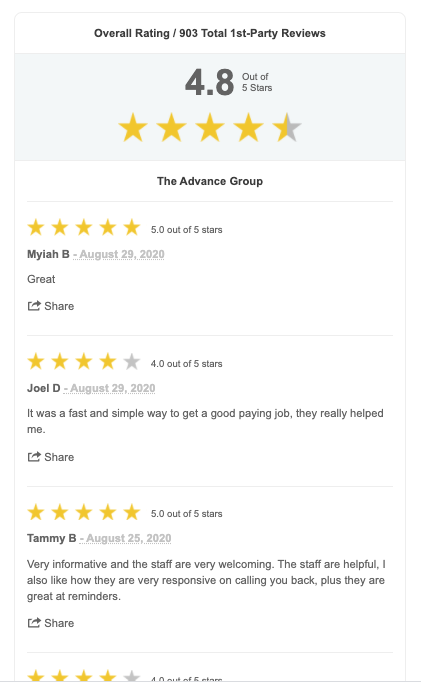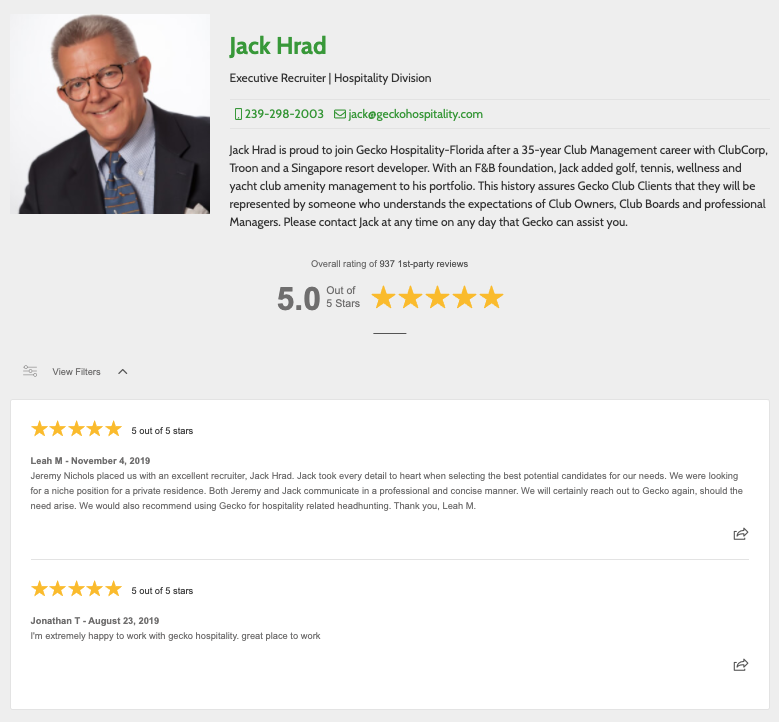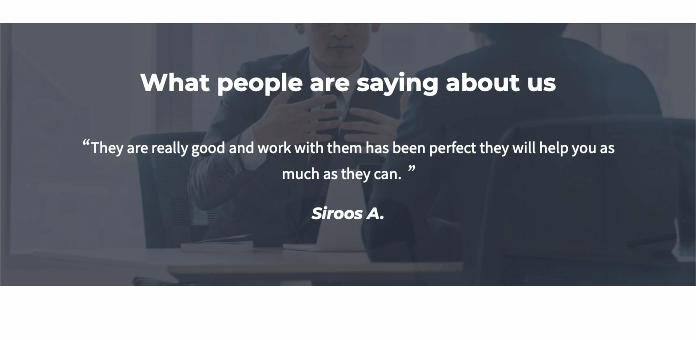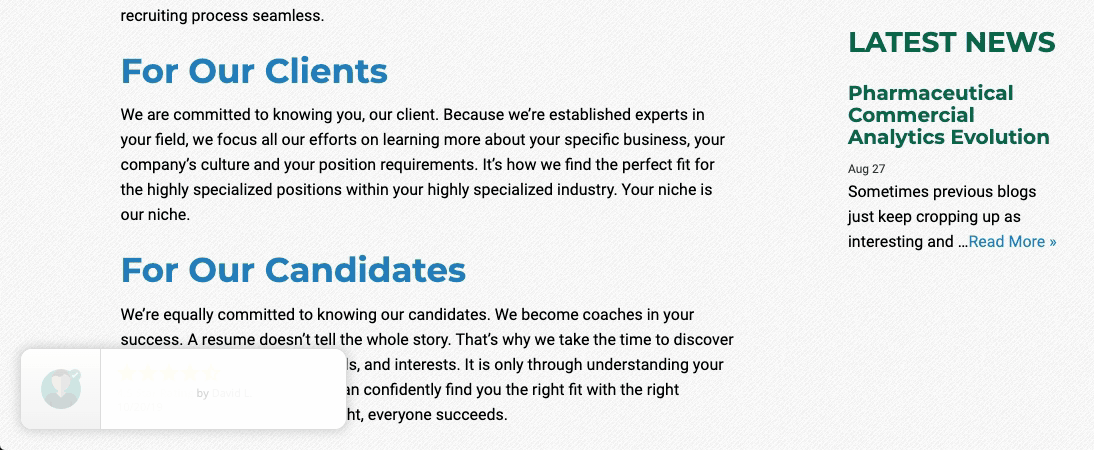More people will visit your website in a month than will ever talk to you in a year. The best websites are optimized to create a capture and retain attention quickly. You have mere seconds to create a good first impression.
Once the visitor decides to stay a few more seconds, you need to start building trust immediately. Trust in your expertise and delivering on the promises you have on your website. Showing your past successes in the form of testimonials is a great shortcut. When done right, your testimonials can do a whole lot more for your team and your business, on and off your website.
Showcase your (current) reviews on your website
It is a common practice to add your testimonials to your website when at one point in history. It is typically when your website is built, and updated when the website is updated, or when you realize you do not have any testimonials displayed.
Keep your testimonials fresh. Show when you received the testimonial. If you do not have a regular practice of asking client or candidate feedback, make sure to start. Positive and current testimonials is a differentiator.

Think of your testimonials as another type of website content. Any content online should always be optimized for search engines. This habit will help you to maximize the ways potential clients and candidates can find you online. For testimonials, you want to make sure you have proper Schema, coding that tells search engines what type of information is on the page and includes it in their search results.
Target your reviews
Each page of your website should have a purpose. The most common pages in staffing are Home, and a variation of, Job Seekers, Clients, Services, About and Contact Us. The Home page should provide a quick impression of your business and access to major areas of the website. The Job Seekers page should provide information, resources, and tools specifically for candidates.
The testimonials you present on these pages should be relevant to the purpose of the page. The Job Seekers page should show evidence of how you have successfully matched previous candidates to opportunities. I do not get the same benefit reading a client testimonial instead.
Properly segmenting your testimonials will allow you to strengthen each of your branch locations with branch-specific testimonials on your Contact Us page. Edify your team on your About page with team member specific testimonials on each team member’s profile.

Make your testimonials fun
Movement naturally draws the eyes. If the testimonials on your website are just static text on a page, it is time to consider adding a little animation and interactivity. These are great ways to grab your visitor’s attention, add an element of fun, make their interaction more memorable, and encourage a longer visit.
Add a testimonial slider
This will give some life to a still page. It allows you to display a few testimonials in the same amount of space it takes to display a single testimonial.

I would not recommend this option unless you have 3 or more testimonials to show.
Testimonial pop-up
You may have already seen this concept on your favorite eCommerce website. As you navigate the page a little bubble pop-up, typically in one of the bottom corners of your screen. It informs you that “John in Idaho just bought the Super Comforter an hour ago.” A few seconds later it pops-up to tell you that Susie just bought the Awesome Comforter 30 minutes ago.” These site notifications let the visitor know that others are finding the store’s website and taking action. It provides confidence in the validity of their purchase decision and confidence to take the next step.

You can do the same thing with your testimonials. Let your website visitors see that not only are you making placements and matching people to the right opportunities, but the clients and candidates are happy with the results.
Your website cannot convert website traffic if potential clients and candidates do not stick around long enough to take action, e.g. filling out a form, submitting an application or subscribing to your email newsletter. A strong first impression and building trust from the start is critical.













